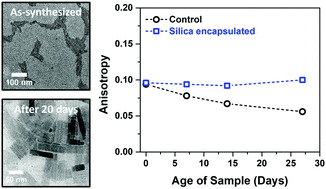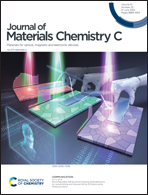Polarization anisotropy losses due to morphological instability in CsPbX3 nanorods and strategies for mitigation†
Abstract
CsPbX3 perovskite nanorods are known to display polarized emission, but also suffer from morphological and spectral instability. Here we synthesized CsPbX3 nanorods with polarized emission across the visible emission spectrum. We find that polarized emission is a function solely of the aspect ratio, as would be expected based on a purely dielectric effect. We then observe changes over time in the emission spectrum and polarization anisotropy as a function of the morphology. We find that, although these perovskite nanorods exhibit strongly polarized emission after synthesis, they suffer from serious morphological instability that reduces the polarization anisotropy over time. Worryingly, nanorods dispersed in anhydrous solvents, and even in a polymer matrix were observed to degrade in both inert environments and under ambient conditions. This results in a significant loss in polarized emission, and represents a problem for many intended applications. Finally, we evaluate several strategies for protecting these particles and find that silica encapsulation can be used to successfully prevent loss of polarized emission even under ambient conditions.



 Please wait while we load your content...
Please wait while we load your content...